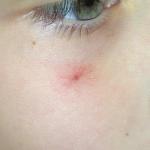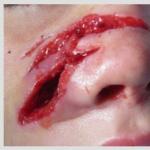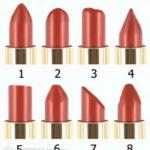Varnish for cork choice. Which coating is best for cork flooring?
Cork floors are constantly increasing in popularity. Their environmental friendliness and sophisticated appearance, of course, simply captivate people. Everyone wants such a floor to last as long as possible, to be reliable, not scratched and constantly pleasing to the eye. Therefore, you need to take care of the varnish coating in advance to increase its durability. In this article we will take a closer look at the coating process itself.
Varnishing the floor is not mandatory stage in the installation itself. However, if you want a durable coating, there is no way around it. It’s worth paying a lot of attention to this stage: a minor carelessness will then ruin your whole look, and your mood to boot.
Is it worth covering an environmentally friendly material with something that is not clear? This should not be done; there is no need to give preference to cheap and, as a rule, promotional materials. We all know where the free cheese is. Let's not step on the same rake twice - we use absolutely harmless varnish for this purpose.
Floor varnishing technology: putting everything on the shelves
Let's find out specifically what varnish to use for coating, what alternatives exist, and what the complexity of the procedure is. You can also use wear-resistant vinyl film. Of course, the word “wear-resistant” is immediately captivating; now we can achieve good reliability indicators. However, is this our goal? The film itself is alarming, because we remember very well vinyl wallpapers, which are so toxic that they are prohibited from being used in children’s rooms, bedrooms and living rooms. Is it worth talking about the environmental friendliness of such a film?
Preparatory work
We remember what varnish is. Therefore, before applying it, you need to ensure that the floor is in perfect condition. What is meant? There shouldn't be a single speck, not a single hair on the cork floor - absolutely nothing. Otherwise, this minor error will ruin the whole effect. Naturally, this is not fatal, you can walk on such a floor, but it will be noticeable. And the girlfriends who come to visit will have another topic for discussion.
After laying the cork floor, at least 36 hours must pass, after which it is time to begin varnishing. Some masters wait three days. However, the surface must be cleaned thoroughly - using a vacuum cleaner or a damp cloth.
The varnishing of the cork floor itself
We do everything step by step:
1. First, let's make sure that everything preparatory work completed and the cork floor is absolutely clean.
2. Choose a varnish (for example, STRATO 442, LOBADUR WS 2K DUO), take it with a reserve.
3. Apply the varnish with a roller in three layers. Don't forget about matting: sand each layer with abrasives, it is better to use fine-grained ones. The time between layers is sometimes very different. It is better to clarify this in the instructions on the package. Sometimes manufacturers indicate one day as a period. In total, at this stage it will take you at least 48 hours.

4. Any cracks found in the floor are not a problem. Acrylic sealant will help with this.
5. Let the cork dry.
And in conclusion...
The varnish has been applied, the master has finished the work, it would seem that’s all... However, there are several nuances. Dried varnish is not yet a guarantee of a strong and reliable coating. In fact, the first few days after coating are the most vulnerable period. The varnish has already been applied, but it has not hardened enough. In this regard, it is strongly recommended to walk along it in socks, and not to wear shoes with rough soles, much less heels.

No matter how much you would like to bring furniture to your apartment after renovation, don’t rush. This is a serious load on a cork floor. Give him time - literally 3-4 days, then he will finally get stronger and be ready for any test.
Secondary floor varnishing
No matter how much cork flooring is praised, its service life is not endless. Accordingly, at one point you will no longer be satisfied with appearance floors There is no need to get upset and look for a replacement for them. The amount will be quite large. Why spend a lot of money on replacing floors when you can simply update them. And this can be done with the same varnish. It will perfectly hide all floor defects and give you their original appearance.
As for the varnish, you need to choose one that will allow the cork to “breathe”. Vinyl coatings will not provide this, that’s for sure. Such floors themselves are warm, which allows little ones to climb on all fours and play while lying down or sitting. Having a button in the house, you need to understand that it spends a lot of time on the floor, so why save on flooring?

Sometimes they sell already varnished cork. What to do in this case? Is an additional procedure for applying varnish necessary? Is there any difference in cost? If you varnish the floor yourself, the price will be much lower, because you will do a significant part of the work with your own hands. If you buy a cork that is already varnished, the cost of materials will be higher.
The technology for varnishing floors (not just cork floors, by the way) is not that complicated in itself. The main thing is to do right choice environmentally friendly composition. For beginners, there are many instructional videos on varnishing floors.
Decorative cork coatings today are widely used in indoor wall and floor cladding. This is a natural finishing material made from the bark of the cork tree. It is chosen not only because of its unique decorative features, but, above all, because of its strength, durability, environmental friendliness, ease of maintenance, practicality, heat and sound insulation, and antistatic properties. And all thanks to the porous structure of the material. In order for the coating to “live” longer without restoration, it is recommended to additionally use a special varnish for cork coatings.

The protective coating allows you to protect the cork material from the penetration of moisture and dirt, increase its strength, and protect it from damage. This is especially required if a cork-based profile is used as a floor covering.
Varnish selection
The market of modern paint and varnish products offers wide choose materials for various needs. There are universal compositions that can be easily used for processing materials of different quality. Many products are offered for a certain type of decorative coating.
Polyurethane varnish is available for adhesive- and vinyl-based cork flooring. Its primary task is to enhance the moisture-resistant qualities of the coating. The applied substance penetrates deep into the base, filling, but not burdening its porous structure. After drying, an elastic, waterproof film is formed, strong and durable.
Polyurethane mixtures according to chemical composition can be one- or two-component. The latter, due to the presence of hardeners, dry on the cork surface much faster (literally in two hours). For greater reliability, it is recommended to cover the floor with several layers of varnish.
After complete drying, the cork will acquire complete tightness, perfect evenness and absolute inertness to moisture, temperature changes and other “vicissitudes of fate.”
When choosing a varnish based on its composition, you should pay attention to the type of solvent. So for indoor use you need parquet varnish on water based. It is non-toxic and non-flammable. Also:

Applying varnish
You can open the cork with varnish only after the parquet glue has completely dried. Manufacturers of paint and varnish products and parquet specialists tirelessly repeat this, following technical instructions in their work. It is most convenient to apply with a velor roller. It is recommended to treat surfaces in at least three layers.
Typically, paint and varnish products are sold in a ready-to-use solution. Before you start painting, the substance should be thoroughly stirred until uniform. A solution that is too viscous can be diluted slightly. Substances that form the basis of the mixture (water or organic solvents) are used as a diluent, but not more than 10% of the total volume of the package.
For better adhesion, a primer solution for parquet products made from natural materials is additionally used. If the cork profile is not factory impregnated, then feel free to use the selected varnish.
If decorative coating previously applied at the factory, a compatibility test of the materials must first be carried out.
It is also recommended to perform intermediate grinding here. This will allow you to obtain a matte, optically more uniform surface. If the finishing layer is applied within 24 hours after the previous layers, then intermediate sanding is not required; more than a day is required. The varnish is applied to a clean, sanded surface, so dust and dirt must be collected with a vacuum cleaner or a dry cloth.  Water-based varnish is good because after using it, working tools and hands can be washed with plain water. But hardened varnish, unfortunately, cannot be removed so easily. Therefore, tools should be put in order immediately after work. If reuse is expected in the near future, then you can wrap the roller in polyethylene or immerse it in a container of water for the time being.
Water-based varnish is good because after using it, working tools and hands can be washed with plain water. But hardened varnish, unfortunately, cannot be removed so easily. Therefore, tools should be put in order immediately after work. If reuse is expected in the near future, then you can wrap the roller in polyethylene or immerse it in a container of water for the time being.
In atmospheric conditions - temperature +20 degrees, air humidity 65% - the varnish will dry within 4 hours. When treating cork with multi-layer varnish, wait a period of at least 24 hours before putting the room into operation. Final polymerization will occur after 5 days. Until this point, it is not recommended to lay carpets and rugs, or to wet clean floors.
Coating care
In the future, caring for cork floors is very simple.
- Cleaning surfaces with a vacuum cleaner.
- Washing using non-aggressive household chemicals.
- Eliminate from use when cleaning cork floors scrapers, abrasive equipment, brushes and brooms with stiff bristles.
- Cosmetic renewal of the protective layer. After a few years, polyurethane varnish can be reapplied, but it is recommended to remove the old decorative layer.
- Maintaining certain climatic conditions in the room: temperature – no higher than +25 degrees; moderate humidity (50-65%).
- Sharp and thin legs of cabinet and upholstered furniture (especially heavy ones) should be additionally equipped with felt pads.
- Use of soft carpeting over cork flooring products.
Cork flooring is always an extraordinary beauty, originality and uniqueness of room decoration. Walking on such a floor is a pleasure, because it is soft and warm. The use of natural materials in the decoration of residential premises is always beneficial: not only from an economic point of view, but also due to comfortable, safe living.
Cork floors are divided into adhesive and floating (attached using a “lock” system).What are the characteristics of adhesive cork floors? They are produced in the form of plates, 4 or 6 mm thick and sizes 300x600 mm, 150x450 mm. The basis of adhesive floors is granulated cork.
The top layer is cork veneer. The binding layer is a natural product - suberin, which is obtained from the cork itself during the production of granules. The veneer determines the texture and pattern of the adhesive coating.
The adhesive floor must be laid on a flat, well-prepared surface.
Installing cork flooring with glue
Installation of the plates begins in the center of the room from the drawn level, then
They move evenly towards the periphery.
Cork floors are glued using special cork glue. Glue is applied to both surfaces. It takes 20 minutes for the surfaces to be ready for gluing.
Toluene-based glue has a very strong gripping effect, so it is no longer possible to move or tear off the plates after contact. Water-based glue sets more slowly.
Applying varnish
The last step in laying adhesive cork floors is to coat the floor with a special varnish.
We recommend using two-component water-based varnish LOBA (made in Germany). Today the market offers matte, semi-matte, extra-matte and glossy varnishes this company. The varnish base is high-quality, pure polyurethane.
They have been on the market for a long time:
Loba WS 2K Duo
And these are the new items from the brand:
Two-component protection LOBADUR 2K InvisibleProtect AT
Water-based varnish LOBADUR 2K Supra AT halfmatt
Advantages of Loba varnishes
- LOBA varnishes are characterized by high wear resistance and are not exposed to aggressive environments. The surface coated with this varnish does not fade from sunlight.
- The varnish is harmless and recommended for use in residential and industrial premises, and has proven itself under heavy loads on the floor and high traffic (shops, cafes, etc.)
Stages of work
Before use, add the hardener included in the kit to the main container. The manufacturer packages the base mixture and hardener separately.
It is necessary to thoroughly mix the two components; after complete mixing, the varnish is ready for use.
It is advisable to use the varnish within 2-2.5 hours.
The varnish is supplied completely ready for use and should not be diluted!
Recommendations for use:
Shake the container with the mixture, add hardener to it in a ratio of 10:1 and shake thoroughly
For partial mixing, use measuring containers
Do not pour varnish on the floor, use a varnish bucket
Work time mixture is 2 hours
Ensure good ventilation of work areas.
Cork coverings should be varnished only after the glue has completely cured. A maximum of 2 layers of varnish can be applied in one day.
Untreated natural cork:
1. Apply 3 layers of WS 2K Duo with a roller
2. After applying the first layer, dry overnight (reduces the risk of swelling)
3. Intermediate sanding before applying the last layer
If there is a need to store the varnish, it must be kept in the dark and in a cool place (in the refrigerator). However, there is no guarantee that it will not polymerize and pieces of hardened varnish will not appear in it.
The temperature in the room when applying varnish should be at least 20 degrees, and the humidity should be approximately 60%. Drying time under such conditions is 2-4 hours.
After this, it is advisable to maintain a gentle operation of the floor for 1-2 days.
Varnish consumption
Consumption is approximately 1 liter per 10 square meters. meters.Depending on the expected load on the floor, the number of layers to be applied is selected. The optimal solution is to varnish the floor three times.
We sell cork flooring with factory-varnished surfaces. Such materials do not require any additional finishing coating of the front surface after installation. Cork floor varnish is needed only for cheap types of coatings or during periodic cosmetic repairs.
All types of special varnish for cork floors cope well with their tasks, some of them are more resistant (and more expensive) to mechanical and chemical influences. And there are materials that are not designed for great forces, used only in rooms with little traffic. In order not to needlessly overpay and at the same time have high-quality cork floors, you should briefly familiarize yourself with the main types of varnishes.
One of the features of cork floors is the ability to deform and return to its previous state under the influence of loads. Such properties are associated with the physical characteristics of the flooring material - low density and, accordingly, thermal conductivity. This means that all varnish coatings should also be slightly deformed and not form microcracks or peel off from the surface. Not all varnishes have plasticity; this should be kept in mind when choosing a brand of varnish. Depending on the technical characteristics, all varnishes are divided into the following groups.

According to the degree of gloss, varnishes can be semi-matte, matte, ultra-matte and glossy. The latter type of coating is recommended for use only in residential premises with minor loads on floor coverings. During repair work, it is strongly recommended to use exactly the same varnishes that were used by the flooring manufacturers. If for some reason it is not possible to select an identical composition, then before purchasing a large batch it is recommended to test the compatibility of the coating on a small area of the floor. In all other cases, old varnishes will have to be completely removed.
Pay attention to the storage conditions of varnishes in distributors' warehouses. Many of their types are water-based; if in winter the temperature in warehouses drops below zero, then it is not recommended to buy such a product; freezing significantly reduces the original factory characteristics of varnishes. If the guaranteed shelf life has expired or is at the “limit”, then it is also not recommended to purchase varnishes.
List of most commonly used varnishes
Unfortunately, domestic manufacturers do not yet know how to produce varnishes for cork floors of the required quality. Professional builders use only imported world famous brands.
LOBADUR® 2K SupraCork. It is characterized by fairly high abrasion resistance and can be used in rooms with average and above average loads on the flooring. Suitable for halls, small corridors, offices.
Loba 2K Supra Cork. A cheaper type of varnish coating, universal use. Recommended for bedrooms and children's rooms. Contains acrylic, which increases strength. Water based.
WS 2K Supra / W 2000. Polyurethane, medium price category and with the same average performance characteristics.
Pallmann Pall-X 96. Completely environmentally friendly, can be used for varnishing cork floors in kindergartens, hospitals, etc. In terms of wear resistance, it ranks among middle category. It hardens quickly and has no restrictions on use by government sanitary organizations.
The final coating is very resistant to scratches and abrasions. Used to increase the service life of floor coverings in public spaces.
To increase the service life of coatings, special protective compounds should be applied to protect the varnish from scratches and other mechanical or chemical damage. Protection is applied only after the varnish has completely dried, but before the premises are used. The varnish must be absolutely clean and smooth, with minimal damage.
Step-by-step instructions for applying varnish to cork floors
Covering a cork floor well is not quick, easy, or difficult. If you don’t have any experience doing this kind of work, don’t take it on. Cork flooring is expensive, and eliminating defects in some cases may require deep sanding, which reduces the thickness of the floor covering with all the negative consequences.
Prepare only the amount of varnish that you can use at the time specified by the manufacturer; during the preparation of the varnish, strictly follow the manufacturer’s recommendations.
Step 1: Preparing the floor.
Most varnishes are transparent and cannot hide various stains. Preparing surfaces for coating is a very important and very responsible stage. The floor should be thoroughly swept and vacuumed, Special attention Pay attention to corners and other places where dust and dirt may accumulate.
Important. The cork floor is varnished with a roller. As soon as dust gets on it, within a few minutes its traces will become visible on a large area of the varnished floor. Don't allow such situations to happen.
One more thing. As soon as stains of various origins have been identified on the surface, measures must be taken immediately to eliminate them. Do not rush to use various solvents; they will be deeply absorbed into the cork coating and are very difficult to remove. Practical builders recommend using fine sandpaper. Sand the dirty area very slowly and very carefully, removing all rough edges. Remove dust again and check the cleanliness of the entire floor.
Step 2: Prepare your tools. You will need a special container for varnish, brushes of various widths and a roller.
If varnishing is done with varnishes based on aggressive solvents, then personal respiratory protection equipment is needed.
The coating is done in several layers, surface unevenness is sanded with fine sandpaper. This can be done manually (long, difficult and of poor quality) or using electric machines. Professional builders almost never use manual methods; for each technological operation there are appropriate devices and tools. With their help, they not only increase labor productivity, but also significantly improve its quality.
Step 3. Prepare the varnish. It can be one or two components, read the instructions carefully. Remember that a two-component varnish cannot be thinned after a slight drying. It hardens not as a result of drying, but after irreversible chemical reactions polymerization of components.
Step 4. Using a brush, varnish difficult corners, junctions of utility networks and pipes.
Practical advice. It is much easier and better to varnish floor skirting boards separately. The elements are fixed into place completely ready and onto the varnished floor. If the skirting boards are installed, it is better to remove them. Lost time is compensated when varnishing the room around the perimeter with a brush.
Step 5: Use a roller to apply the first coat.
In practice, you need to do at least three layers. If there is little experience, then the number of layers increases, and each time you have to correct the defect. The next layer is applied only after the first one has completely dried. You should know that the quality of varnishing a floor depends not so much on the number of layers of varnish applied, but on the professionalism of the builders.
Step 6. After the varnish has completely hardened, the first sanding is performed. The floor surface cannot be perfectly flat; partial leveling must be done with varnish coatings. It is much better to grind with special electric machines; they increase productivity and improve quality.
Wash the floor after sanding
Step 7. Check the quality after each coating, if everything is normal, there is no need to grind in vain. Do not rush to do all the operations at once; the total time for a full cycle of work can be a week or more.
At the first opportunity, before starting to varnish the floor, try the varnish on any section. Before doing this, shake the brushes vigorously several times; this technique will help remove loose bristles from them. Clean the roller as well.
Make the first layer with a fairly liquid varnish. Almost all of it will be absorbed into the coating, and existing unevenness will be removed faster. In addition, drying time is significantly reduced, which minimizes the likelihood of dust from the air entering and sticking to surfaces. Immediately after completing the work, all doors and windows must be closed. Let the varnish dry longer, but the risk of clogging it with drafts is eliminated.
Choose the right type of varnish and technology for its application. There are varnishes that can be poured over the surface and leveled long rules, in other cases the alignment occurs independently. But such technologies require not only professional knowledge, but also an absolutely flat floor surface. Only professionals can carry out construction work of this complexity.
Sometimes the varnish takes a very long time to dry, but there is no need to be upset. There may be several reasons: poor-quality or expired varnish, a damp surface, a violation of the preparation technology. Wait until the crust dries, then you can use fans and heaters, create drafts, etc.
Never sand the final coat of varnish. If problems are found, they should be eliminated and another layer applied. It is highly advisable to cover the varnished surface with a protective layer. There is enough choice in implementation various types, select them taking into account the components of the varnish used.
After some time, the varnish begins to peel off and swell - a big problem. Occurs due to the fact that during varnishing several layers had incompatible solvents. When such a problem occurs, there is only one way out - completely remove the layers with a sanding machine and begin the process of coating the cork floor with varnish again.
Coating any surface, especially the floor, with varnish is a complex technological process. If you have the slightest doubt about your qualifications, it is better to seek help from professionals. The work will be done not only faster and better, but in many cases much cheaper in the end.
Select types of varnish depending on the load on the flooring. The least traffic is in the bedrooms; here you can use cheaper types. The living room and kitchen require high-quality expensive materials.
And lastly, regarding environmental friendliness. You need to keep in mind that all the furniture in the apartment is covered with the same varnishes. And old furniture is quite harmful compounds. Don't be afraid that flooring will be the last straw when... correct modes room ventilation concentration harmful substances will never exceed recommended regulatory documents meanings.
Video - Durability of varnish coating
IN Lately Decorative cork coating is becoming widespread, but what kind of varnish to use for cork flooring or cork?
This is an environmentally friendly and natural material that is made from the bark of the cork tree. This material has a huge list of advantages, including strength, durability, practicality, antistatic, easy maintenance, excellent sound and heat insulation characteristics, despite its high cost of approximately 1,200 rubles per 1 sq.m.
Despite all its advantages, cork requires a protective layer. Manufacturers took care of this and created special varnishes for cork products.
There are panels that are already produced with treated varnishes, but they are much more expensive. Today we will talk about how to choose the right varnish for cork.
Characteristics of varnishes
Kinds
It should be noted that it is best to use water-based varnishes. They do not clog numerous pores, which allows the material to breathe calmly. During operation, the resulting film on the surface does not crack. When purchasing, you should clarify whether the manufacturer treated the panels of the cork product with wax. If yes, then varnish cannot be used.
The most important requirement for varnishes is plasticity. Since cork panels linearly expand and contract during use under load, the varnish coating must therefore have a sufficient margin of ductility.
Water-based varnishes are divided according to technical characteristics into those described below.
One-component
They have an average cost and belong to universal means, environmentally friendly composition. Drying (hardening) of the varnish occurs due to exposure to ultraviolet rays.
Two-component
They have a high cost. The varnish contains a small amount of chemical impurities, which makes it environmentally friendly and natural composition you can't name him. Specialists and professionals often use these varnishes when working.
Polyurethane with solid additives
Aluminum oxide and various ceramic chips are used as additives. These additives improve appearance and increase wear resistance. Refers to universal varnishes.
Polyurethane with acrylic
Thanks to the addition of acrylic, performance characteristics are significantly increased. They are used in places with high dynamic loads.
Classification by shades
- Matte.
- Glossy.
- Semi-matte.
- Ultra matte.
- Glossy varnishes are used in places with low dynamic and static loads.
Main brands of varnishes for cork coatings
Currently present on the building materials market huge selection varnishes for cork. It should be noted that domestic manufacturers cannot compete in this segment. Specialists and professionals trust proven imported compounds, which we will now consider.

Varnish has a number of advantages:
- It can be tinted, that is, set to a different shade.
- Almost odorless.
- Resistant to UV rays.
- Resistant to aggressive chemicals.
This is a universal varnish that can be used for both parquet and cork. Can be matte or glossy. Average consumption 100 g/m2, when using a special roller. The coating treated with this varnish is best washed with a cloth moistened with a neutral pH environment.
- Pallmann Pall-X This is an environmentally friendly composition with average wear resistance. Can be used in children's rooms, bedrooms, hospitals. Water-based varnish is easy to apply and does not require special care. There are only two shades available, glossy and semi-matte. Average consumption per 1 layer is 110 g/m2.
- Loba 2K Supra Cork. Acrylic has been added to the composition to increase the durability of the coating. The varnish is one of the cheapest and universal. Used for processing cork products in bedrooms and children's rooms. It is not recommended to walk on the coating until completely dry (6 days).
- LOBADUR WS EasyFinish. From the name it is clear that this is a topcoat with a very high level of resistance to abrasion and scratches. 3-4 layers should be applied, each layer should be sanded, this increases the adhesion of the next layer. After 4-6 hours, the varnish layer dries. The coating will gain strength in 4-5 days.
How to varnish cork flooring
When the process of installing cork coverings is completely completed, you should wait until the glue used to attach the cork panels is completely dry.
If the coatings had a locking fastening system and you did not use glue, then you can start applying varnish right away.
The whole process is divided into 3 stages:
- Stage 1 is preparatory.
- Stage 2 is applying varnish.
- Stage 3 is grinding.
Stage 1. Preparatory
Vinyl cork flooring is coated with a protective compound using a roller. Professionals recommend buying protective compounds from the same manufacturer as the varnish. These substances are intended to be used together.
Caring for varnished cork flooring
As we understand, each coating must be looked after, otherwise it will immediately lose all its decorative and performance properties.

Conclusion
Cork coverings are always unique and natural beauty, which makes any design and interior exclusive. High-quality varnish creates reliable protection for cork coverings, while the panel pattern remains unchanged, which creates a natural and natural effect in your home.






